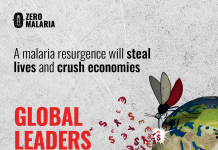By Milliam Murigi
The CGIAR’s Sustainable Farming Program (SFP) is ramping up investment in accessible diagnostics, real-time surveillance systems, and integrated pest management (IPM) strategies to help protect vulnerable farming communities from the increasing pests and disease threats.
Plant pests and diseases are responsible for up to 40 percent of crop losses each year, amounting to an estimated $220 billion in economic damage. The consequences fall hardest on farmers in low- and middle-income countries, where resources for monitoring and responding to outbreaks are often limited.
“We are scaling technologies to help farmers manage pests and diseases, particularly biocontrol for pests such as fall armyworm, mealybugs and pod borers, said Dr. Lava Kumar, Head of the Germplasm Health Unit and Virology and Molecular Diagnostics at the International Institute of Tropical Agriculture (IITA).
“SFP is continuing to mobilize interdisciplinary capacity, in collaboration with national and international partners, to generate appropriate innovations and scale them to counter pests threatening food production and incomes of smallholder farmers.”
Dr. Kumar noted that simultaneous efforts have focused on assessing the impact of climate change on pests using tools such as Insect Life Cycle Modeling (ILCYM). The SFP program also has a biorisk management facility to strengthen West Africa’s regional capacity to combat pests.
SFP is building on the priorities identified during a needs assessment conducted across 26 countries in Africa, Asia, Latin America and the Caribbean, to identify knowledge and capacity gaps in pest and disease surveillance and response strategies.
The survey identified major research and capacity gaps of National Plant Protection Organizations (NPPOs) and highlighted the need to equip NPPOs to best respond to the growing threats of plant pests and diseases. However, many NPPOs cannot properly carry out the necessary diagnosis, surveillance, and extension work at the scale and speed required to contain such crop disease and pest crises, particularly in the low- and middle-income countries in the Global South.
“The survey found that banana/plantain, maize, potato, and rice were the crops most targeted for pest and disease surveillance efforts,” Kumar said.
Confirming priority crops will help set priorities for developing common diagnostic methods, sharing protocols across regions, and supporting/sharing knowledge to improve the diagnostic capacity as a preparedness strategy for emerging pests.
The SFP believes young scientists could play a crucial role in this digital transformation to raise the standards in data management over the next few years.
To roll out the pest and diagnostics and surveillance roadmap, the Sustainable Farming Program will rely on the regional diagnostic hubs hosted by the CGIAR Germplasm Health Units across the continents.
This worldwide survey, benefiting from the long-term partnerships of CGIAR Germplasm Health Units, could be seen as the foundation block of an urgently needed global plant health diagnostics and surveillance network to counter the growing risks of future plant disease and pest outbreaks.
Research and capacity building by the Sustainable Farming Program is supporting plant health, mycotoxin-free crops, integrated water management, context-specific mechanization, climate adaptation and mitigation on farms, and farm system integration.
The initiative marks a crucial step toward a global plant health network to ensure farmers can detect, contain, and combat outbreaks before they devastate crops.






